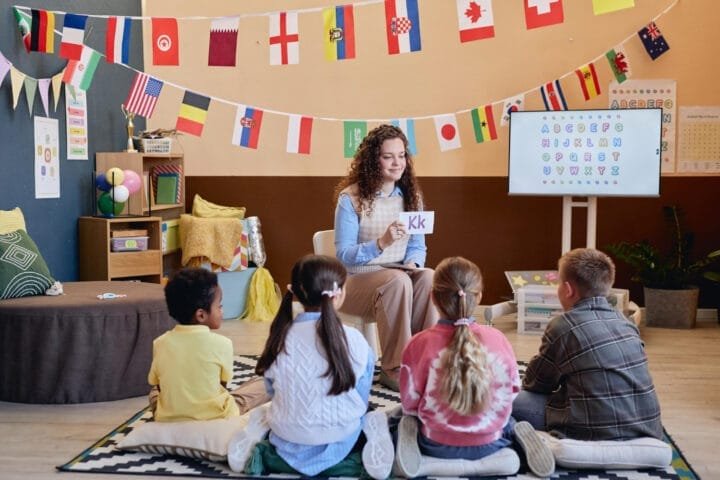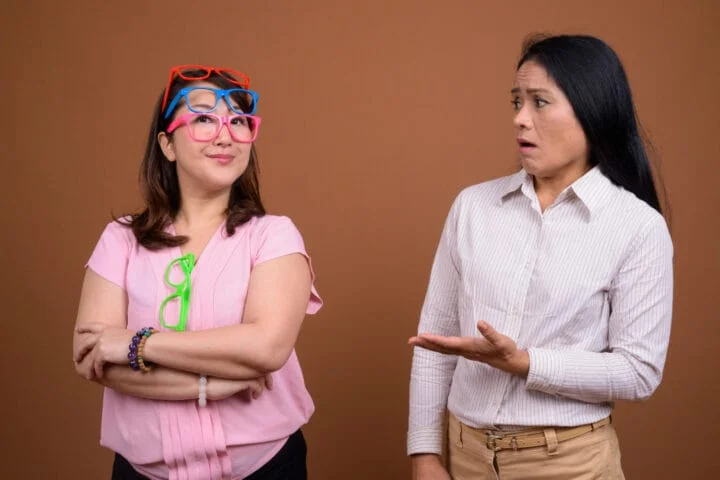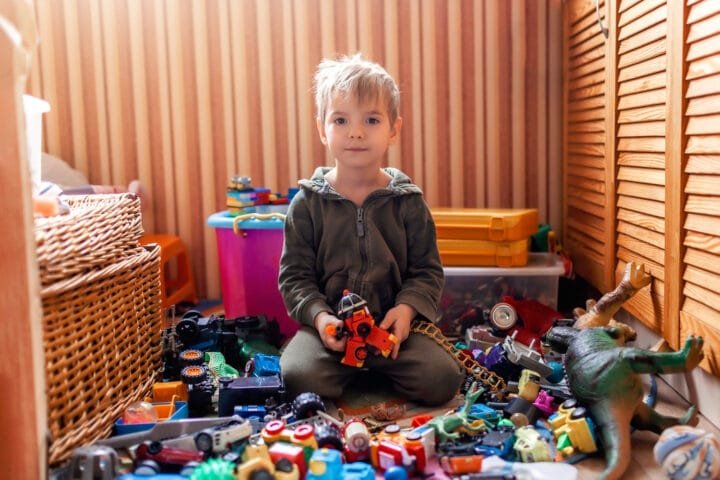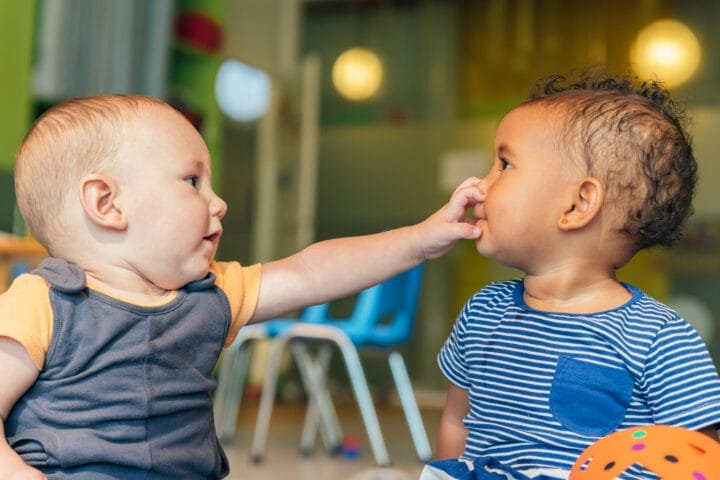The Shocking Truth About Kid Influencers: What Every Parent NEEDS to Know Before Their Child Becomes the Next Million-Dollar Creator
Have you seen those family YouTube channels where adorable 7-year-olds unbox toys and somehow make more money than most adults with advanced degrees? It’s wild! Last week, my neighbor’s daughter earned $3,000 from a single TikTok post promoting a back-to-school brand. Meanwhile, I’m over here working 40+ hours weekly to pay my mortgage. The kid-influenced economy isn’t just booming—it’s exploding into a phenomenon that’s reshaping childhood itself. And as California’s groundbreaking new laws protecting child social media stars show, we’re only beginning to understand the implications. 1
As a mom who’s navigated these murky waters with my own tech-savvy tween, I’ve discovered there’s a whole universe of complexity behind those seemingly innocent dance videos and gaming streams. Whether you’re intrigued by the potential opportunities or concerned about the risks, buckle up—this deep dive into the world of child content creators will change how you view that iPad in your kid’s hands forever.
The Digital Creator Landscape: Welcome to the New Child Stardom
Remember when being a “child star” meant landing a role on Disney Channel or starring in a blockbuster movie? Those days feel positively ancient now. Today’s rising stars aren’t waiting for casting calls or talent agents—they’re building massive audiences from their bedrooms, playrooms, and backyards.
The numbers are staggering. Family content creators on YouTube can earn anywhere from $10,000 to 100,000+ monthly from a combination of ad revenue, sponsorships, and merchandise. Even more mind-blowing? The highest-earning kid YouTuber made \29.5 million in a single year according to Forbes. Let that sink in for a moment: a CHILD earned nearly $30 million dollars for playing with toys on camera.
“We’re seeing an unprecedented shift in childhood economics,” explains Dr. Marta Rodriguez, a digital media researcher at Stanford University. “For the first time in history, children as young as three or four can become the primary breadwinners in their households simply by being themselves on camera.”
The platforms fueling this revolution vary widely. While YouTube remains the heavyweight champion for family vloggers and kid creators (particularly for longer-form content), TikTok has rapidly become the launching pad for tween and teen influencers. Instagram continues to host countless young fashion and lifestyle creators, while newer platforms like Twitch dominate the youth gaming creator space.
What’s particularly fascinating is how the concept of “work” has transformed for this generation. When I asked my 11-year-old nephew what he wants to be when he grows up, he looked at me like I was speaking an ancient language and said, “I already AM something—I’m a content creator.” His gaming channel has 15,000 subscribers, and he sees his daily recording sessions not as play but as his “job.”
This blurring between play, creativity, and commerce represents something fundamentally new. Unlike traditional child actors who clearly “go to work” on sets with scripts and directors, kid content creators often perform their monetizable activities in the same physical and mental spaces where they play freely. The boundaries between leisure and labor have never been fuzzier.
Monetization Mechanisms: How Kids Actually Make Money Online
Let’s talk about cash flow. How exactly do these mini moguls turn their content into cold, hard currency? The revenue streams are surprisingly diverse and increasingly sophisticated.
For YouTube creators, the foundation typically begins with the YouTube Partner Program, which allows channels with over 1,000 subscribers and 4,000 watch hours to run ads. For family channels featuring children, this ad revenue can be substantial, particularly for content targeting the lucrative toy, education, and entertainment categories. A family channel with 1 million monthly views might generate $3,000-$5,000 in ad revenue alone.
Brand partnerships represent the real goldmine, though. A single sponsored video from a kid influencer with a sizeable following can command anywhere from $5,000 to $50,000, depending on the creator’s reach and engagement. These sponsorships have evolved far beyond simple product placements; they now include complex multi-platform campaigns, long-term ambassadorships, and exclusive product collaborations.
Merchandise has become another major revenue driver. From signature hoodies to branded toys and exclusive digital content, kid creators are launching product lines that rival established retail brands. Ryan Kaji of Ryan’s World fame has toys in Target and Walmart nationwide level of retail presence most adult entrepreneurs can only dream about.
What many parents don’t initially realize is the significant time commitment these revenue streams demand. What starts as fun video-making often transforms into rigid posting schedules, content planning sessions, and hours of editing. Carefree spontaneity gives way to something much more structured.
“We started our family channel thinking it would be a fun weekend activity,” shares Jessica, mom to 9-year-old TikTok dance sensation Lily. “Three years later, we’re turning down birthday party invitations because they conflict with sponsored content deadlines. Sometimes I wonder if we’ve created a monster.”
Production expectations escalate alongside success. Those charming, slightly wobbly first videos shot on a smartphone quickly become insufficient as audiences and brand partners expect increasingly polished content. Many families eventually invest in expensive camera equipment, lighting setups, editing software, and even production assistants.
The Potential Upside: It’s Not Just About the Money
Before we dive into the very real concerns, let’s acknowledge the legitimate benefits that can come from thoughtful, well-managed content creation for young people. The skills development potential is significant.
Digital literacy tops the list of valuable competencies these young creators acquire. In an age where technological fluency is a prerequisite for success in nearly every field, kid content creators develop remarkable technical capabilities. Ten-year-olds are learning video editing, basic coding, graphic design, and audio engineering—skills that would typically require specialized courses or college degrees.
The communication abilities developed through content creation can be equally valuable. Children who regularly present on camera often become articulate, confident public speakers. They learn to structure their thoughts, explain concepts clearly, and adapt their communication style to different audiences and platforms.
The financial literacy component shouldn’t be underestimated either. Young creators who are guided properly can learn crucial money management concepts through their earnings. Setting up savings accounts, understanding taxes (yes, kid influencers have to pay taxes!), budgeting for equipment upgrades, and distinguishing between immediate wants and long-term financial goals are lessons many adults still struggle with.
My friend’s daughter started a baking channel at 13, and the experience transformed her relationship with money. “Before YouTube, she’d spend her allowance instantly,” my friend told me. “Now she’s comparing investment options for her earnings and has already saved enough for her first year of college tuition. The maturity she’s developed around finances is extraordinary.”
Creative expression represents another potential benefit. For children with artistic inclinations, content platforms provide unprecedented opportunities to develop their craft and receive immediate feedback. Young filmmakers, musicians, artists, and storytellers no longer need to wait for traditional gatekeepers to recognize their talents—they can build audiences directly.
The Dark Side: Serious Risks Behind the Ring Lights
Now for the sobering reality check. The risks associated with child content creation are substantial, varied, and sometimes devastating. As parents and society at large, we’re fundamentally unprepared for many of these challenges.
Online safety concerns top the list for obvious reasons. Children with public profiles face increased risks of inappropriate contact, harassment, and even stalking. The comment sections on kid creator content can quickly become cesspools of disturbing remarks, despite platform moderation efforts. Many parents find themselves in the exhausting position of constantly scanning comments to protect their children from the darker corners of the internet.
The psychological impacts can be equally troubling. Imagine developing your identity and self-worth while receiving constant numerical feedback on your personality, appearance, and creations. Studies on adolescent development and social media suggest that tying self-esteem to metrics like views, likes, and subscriber counts can create unhealthy psychological patterns that persist into adulthood.
“We’re seeing concerning rates of anxiety and depression among young creators, particularly when they experience the inevitable fluctuations in audience response,” explains child psychologist Dr. William Chen. “A video that ‘underperforms’ can trigger profound feelings of rejection and inadequacy in young content creators who haven’t yet developed stable identities.”
There’s also the pressure of constant performance. Kids who monetize their content often feel unable to stop producing—a form of digital child labor that operates outside traditional workplace protections. The boundaries between authentic childhood experiences and performative content creation collapse, leaving children perpetually “on stage.”
Privacy considerations represent another serious concern. Children whose lives are extensively documented online develop what researchers call a “digital footprint by proxy”—an extensive online history they had little say in creating. As these children grow older, they may resent or feel embarrassed by content that once seemed innocent but now affects their personal and professional lives.
Legal Landscape: New Protections in an Uncharted Territory
If you’re feeling confused about the legal frameworks governing child creators, you’re not alone. The legal landscape is a patchwork of outdated regulations being frantically adapted to an entirely new phenomenon.
California has taken the lead with groundbreaking new legislation requiring parents who profit from their children’s social media presence to set aside earnings in protected trust accounts. This builds on the state’s historic “Coogan Law,” which has protected child actors since 1939. Under the new laws, children featured in monetized content are entitled to a percentage of earnings based on their appearance time, with at least 15% deposited in a trust they can access at age 18. 1
“A lot has changed since Hollywood’s early days, but here in California, our laser focus on protecting kids from exploitation remains the same,” stated Governor Gavin Newsom when signing the legislation. “In old Hollywood, child actors were exploited. In 2024, it’s now child influencers.” 1
Illinois pioneered similar protections that took effect in July, though their legislation applies only to children under 16, while California’s covers all minors under 18. These laws represent crucial first steps, but the vast majority of states offer no specific protections for kid influencers. 1
Federal regulations also lag behind the reality of child content creation. The Children’s Online Privacy Protection Act (COPPA) provides some guardrails around collecting data from children under 13, but it wasn’t designed to address the unique circumstances of children themselves becoming content creators.
The tax implications of child influencer income create another layer of complexity. Many parents are shocked to discover that their children’s earnings are subject to self-employment taxes, potentially at higher rates than traditional employment income. Without proper planning, families can face unexpected tax burdens that significantly reduce the apparent windfalls from viral success.
Family Dynamics: When Your Child Becomes the Breadwinner
Perhaps the most profound shifts occur within family systems themselves. What happens when a 9-year-old suddenly generates more income than their parents? How do siblings relate to each other when one becomes a public figure while others remain private? These questions touch on fundamental aspects of family psychology that we’re only beginning to understand.
Power dynamics inevitably shift when children become financial contributors or even primary earners. Parents may find themselves in conflicted roles as both guardians and de facto business managers. Children may begin questioning parental authority when they perceive themselves as financially independent.
“I’ve seen families where parents become almost employees of their child creator,” notes family therapist Dr. Elena Morales. “The natural hierarchy that helps children feel secure becomes inverted, creating confusion about boundaries, responsibilities, and decision-making authority.”
Sibling relationships face unique strains as well. When one child receives extraordinary attention, opportunities, and possibly income through content creation, siblings may experience complex feelings of jealousy, resentment, or pressure to develop comparable platforms. Some families successfully incorporate all siblings into content creation, but many struggle to maintain equitable treatment.
Then there’s the uncomfortable question of financial control. Who decides how a child influencer’s earnings are spent? Are parents justified in using these funds for family expenses, particularly when the content features the entire family? Without clear agreements and boundaries, money can quickly become a source of conflict.
The time commitment required for successful content creation also impacts family cohesion. Production schedules often dictate family activities, vacation timing, and even daily routines. Holidays and special occasions become content opportunities rather than simply family moments to be enjoyed.
Decision Framework: Is This Right for YOUR Child?
Given these complex considerations, how should parents approach decisions about allowing or encouraging their children to create monetized content? There’s no universal answer, but a thoughtful framework can help families navigate these waters.
Start by honestly assessing your child’s intrinsic motivation. Is content creation genuinely their passion, or are they primarily responding to external incentives? Children who create content out of authentic interest are generally better positioned to handle the challenges than those motivated primarily by potential fame or earnings.
Next, evaluate your child’s emotional readiness. Does your child have a secure sense of self that can withstand public feedback? Can they distinguish between online reactions and their inherent worth? Do they have effective strategies for managing disappointment and criticism? Children with fragile self-esteem or sensitivity to rejection may be particularly vulnerable to the psychological impacts of public content creation.
Consider your family’s capacity for appropriate oversight and support. Creating healthy, safe content requires significant parental involvement—not just in production but in managing interactions, finances, and potential opportunities. If your family lacks the time or resources for this level of engagement, monetized content creation may present risks that outweigh potential benefits.
Be brutally honest about your own motivations as a parent. Are you drawn to the potential earnings? The vicarious experience of attention or fame? The satisfaction of nurturing your child’s interests? Understanding your own driving forces will help you make decisions that genuinely prioritize your child’s wellbeing rather than fulfilling your own needs.
Practical Safeguards: Protecting Your Child Creator
If you decide to support your child’s content creation journey, implementing robust safeguards becomes essential. These practical protections can significantly reduce risks while preserving potential benefits.
Start with stringent privacy boundaries. Consider whether certain aspects of your child’s life should remain entirely off-limits for content—bedrooms, bathrooms, emotional moments, disciplinary situations, and personal struggles are good candidates for privacy protection. Many successful child creators maintain compelling presences while keeping significant portions of their lives private.
Establish clear working hours and limits. Treat content creation like any other structured activity with defined time boundaries. Children need plenty of unfilmed, unmonetized time to develop authentic identities and relationships. Many families follow a “cameras off” policy during meals, before bedtime, and during family vacations to preserve genuine connection.
Create a financial plan that balances current enjoyment with future security. Beyond the requirements of Coogan-type laws, consider working with a financial advisor to develop a comprehensive approach to your child’s earnings. Many families follow the “three-thirds rule”—one-third for current expenses and enjoyment, one-third for college savings, and one-third for long-term investments the child can access in adulthood.
Prioritize education about digital citizenship and media literacy. Ensure your child understands concepts like digital footprints, online safety, content ownership, and the constructed nature of social media. Children who comprehend these concepts are better equipped to make thoughtful decisions about their online presence.
Maintain regular check-ins about your child’s continued interest and wellbeing. Set up weekly conversations to assess how content creation is affecting their happiness, stress levels, friendships, academic performance, and overall development. Be prepared to pivot or pause if negative impacts emerge.
Real Success Stories: When Kid Creating Goes Right
Despite the legitimate concerns, many families navigate the child creator landscape successfully, creating positive experiences that benefit children both immediately and long-term.
Consider 15-year-old Mia, who started a science exploration channel at age 10. With careful parental guidance, she limited filming to weekend experiments while maintaining strong academic performance and diverse extracurricular activities. Her parents established trust for her earnings and involved her in age-appropriate financial decisions. Five years later, Mia developed remarkable scientific communication skills, built connections with professional scientists who mentor her, and accumulated sufficient savings for college—all while maintaining a healthy relationship with her online presence.
Or look at the Martinez family, whose cooking channel features all three children demonstrating family recipes. The parents established strict boundaries: filming only on Saturday mornings, equal screen time for each child, and unanimous family agreement required for all brand partnerships. They’ve declined lucrative opportunities that would have required more intensive production schedules, prioritizing their children’s wellbeing over maximum profit. The result has been a sustainable creative outlet that has strengthened family bonds rather than straining them.
These success stories share common elements: clear boundaries, moderate approaches to monetization, ongoing communication about the child’s experience, and parents who consistently prioritize wellbeing over financial or status incentives.
Legal Protections for Child Influencers: New Laws Leading the Way
The legal landscape for child creators is evolving rapidly as lawmakers recognize the need for updated protections. The most significant developments come from California, where recently signed legislation extends traditional child performer protections to the digital realm.
Under California’s new laws, parents who monetize their children’s online presence must follow specific requirements:
- Establish trust accounts for their children’s earnings
- Maintain records of children’s appearance times in monetized content
- Document earnings attributable to the child’s participation
- Deposit at least 15% of earnings into the trust
- Ensure these funds remain inaccessible until the child turns 18 1
These requirements mirror the historic Coogan Law, which has protected child actors from financial exploitation since 1939 after child star Jackie Coogan sued his parents for squandering his earnings. 1
Illinois implemented similar protections earlier this year, though their law applies only to children under 16 rather than California’s broader coverage of all minors. These pioneering state laws likely represent the beginning of a nationwide trend toward greater protection for young content creators. 1
For families outside these states, the legal framework remains less defined, placing greater responsibility on parents to establish appropriate financial and psychological safeguards. Regardless of location, parents should consider consulting with an attorney familiar with digital media to understand their specific obligations and options for protecting their child’s interests.
The Future Landscape: Where Is Kid Content Creation Heading?
The phenomenon of child content creators continues to evolve rapidly, with several emerging trends likely to shape the landscape in coming years.
Platform diversification represents a significant shift. While YouTube and Instagram dominated early kid creator culture, newer platforms like TikTok have dramatically changed content expectations and opportunities. This diversification will likely continue, with specialized platforms emerging for particular content niches and audience demographics.
Increasing regulation appears inevitable as more jurisdictions follow California and Illinois in establishing legal frameworks specifically addressing child creators. Federal legislation may eventually create nationwide standards for financial protections, working conditions, and content limitations.
The mainstream entertainment industry is increasingly blurring boundaries with social media creation, with traditional studios developing programs featuring established kid influencers while social media stars leverage their online fame to secure traditional media opportunities. This convergence creates both new opportunities and additional complexities for young creators navigating multiple entertainment contexts.
Educational institutions are beginning to develop resources specifically addressing the needs of student content creators, including flexible scheduling options, media literacy curricula, and guidance counseling approaches tailored to the unique pressures these students face.
Perhaps most importantly, we’re seeing the emergence of the first generation of young adults who grew up as child content creators. Their perspectives on the benefits and harms of early online fame will profoundly shape how we approach this phenomenon moving forward.
Conclusion: Navigating the New Normal With Eyes Wide Open
The kid creator phenomenon isn’t a passing trend—it’s a fundamental shift in how children participate in entertainment, education, and commerce. As parents, educators, and policymakers, our challenge is neither to uncritically embrace nor categorically reject this new reality, but to develop nuanced approaches that protect children while allowing appropriate opportunities for growth and expression.
The financial potential is undeniably attractive. When my daughter’s friend started earning more from weekend TikTok dance videos than I made in my first professional job, I felt that parental twinge of wondering if we were missing something important. But the deeper I’ve delved into this world, the more convinced I’ve become that financial outcomes should never be the primary consideration in decisions about children’s content creation.
The most successful kid creator stories aren’t measured in dollars or followers but in holistic wellbeing. They feature children who maintain strong in-person friendships, diverse interests beyond their online presence, healthy family relationships, and age-appropriate autonomy over their participation. Their online activities enhance rather than define their identities.
As California’s groundbreaking legislation recognizes, this new frontier requires thoughtful guardrails that acknowledge both the opportunities and risks of child content creation. By establishing clear boundaries, prioritizing children’s long-term interests, and remaining attentive to signs of stress or exploitation, families can navigate these waters successfully. 1
The digital playground offers exciting possibilities for young creators, but like any playground, it requires adult supervision, appropriate safety equipment, and recognition of each child’s unique readiness for its challenges. With thoughtful guidance, the next generation of digital creators can build meaningful skills, connections, and experiences without sacrificing the fundamental elements of a healthy childhood.
FAQs
The earning potential varies dramatically, but successful kid influencers can generate substantial income. Top-tier child creators on YouTube can earn $10,000 to 100,000+ monthly through a combination of ad revenue, brand partnerships, and merchandise sales. The highest-earning kid YouTuber made \29.5 million in a single year according to Forbes reports. Even on platforms like TikTok, children with strong followings can earn thousands from individual sponsored posts. However, it’s important to understand that these high-earning cases represent the exception rather than the norm, and building a profitable audience typically requires significant time investment and often substantial production costs.
Legal protections are still catching up with this new phenomenon, but important progress is being made. California recently enacted groundbreaking legislation requiring parents who profit from their children’s social media presence to set aside at least 15% of earnings in protected trust accounts that children can access at age 18. Illinois has implemented similar protections for children under 16. These laws are built on the historic Coogan Law that has protected child actors since 1939. However, in most states, there are still no specific legal protections for child content creators. Federal regulations like COPPA (Children’s Online Privacy Protection Act) provide some guardrails around collecting data from children but weren’t designed to address children themselves becoming content creators.
The psychological impacts can be substantial and complex. Children who monetize their online presence often tie their self-worth to metrics like views, likes, and subscriber counts, which can create unhealthy psychological patterns. Studies show concerning rates of anxiety and depression among young creators who experience fluctuations in audience response. The pressure of constant performance can lead to burnout, while the blurring of authentic childhood experiences with performative content creation can interfere with identity development. Privacy concerns also emerge as children develop extensive “digital footprints by proxy” that may affect them into adulthood. However, with appropriate parental oversight, clear boundaries, and regular check-ins about well-being, some children do navigate these challenges successfully while developing valuable skills.
Parents should start by honestly assessing their child’s intrinsic motivation—is content creation genuinely their passion, or are they primarily responding to external incentives like potential fame or money? Evaluate your child’s emotional readiness to handle public feedback and criticism. Consider your family’s capacity for appropriate oversight and support, as creating healthy content requires significant parental involvement. Be honest about your own motivations as a parent. If you decide to support your child’s content creation, implement robust safeguards: establish privacy boundaries about what aspects of life remain off-limits, set clear working hours and limits and create a financial plan balancing current enjoyment with future security, and maintain regular check-ins about your child’s continued interest and wellbeing.
Successful families treat content creation like any structured activity with defined time boundaries. Establish “cameras off” periods during meals, before bedtime, and during family vacations to preserve genuine connection. Ensure your child maintains diverse interests beyond their online presence, strong in-person friendships, and appropriate academic focus. Monitor for signs that content creation is negatively impacting development, such as increased anxiety, sleep disruption, or declining interest in non-filmed activities. Consider working with a family therapist familiar with digital media issues to navigate complex family dynamics that may emerge when a child becomes a public figure. Remember that the most successful kid creator stories aren’t measured in dollars or followers but in holistic wellbeing and balanced development.
Recommend Books
A practical guide for children and parents exploring how to establish a positive online presence while making a difference. This book appears in Amazon’s “Top 50 Children’s Books Influencers in the US” list and provides actionable strategies for young content creators who want to build an audience while maintaining authentic community connections.
From the creator of Dog Man, this popular graphic novel explores themes of influence, creativity, and authenticity through the adventures of Li’l Petey, Flippy, and Molly as they inspire twenty-one baby frog siblings to create their own unique comics. With a 4.9-star rating from over 1,800 reviews, this bestseller uses humor and multiple art styles to examine the impact of influencer culture in a kid-friendly format.
While not specifically about influencers, this companion to the Cat Kid Comic Club series is frequently purchased alongside “Influencers” and appears in Amazon’s “Customers who viewed this item also viewed” section. This bestselling graphic novel continues the adventures in the same universe where Cat Kid Comic Club takes place.
The third installment in the Cat Kid Comic Club series explores themes of creative purpose and authentic expression that connect directly to the influencer focus of volume 5. With a 4.9-star rating from over 5,600 reviews, this book helps young readers understand the importance of creating content with intention rather than just for attention.
This boxed set includes the first three books in the series that culminate with “Influencers” in volume 5. With a 4.9-star rating, this collection allows readers to follow full character development leading to the exploration of influencer culture in the latest book. The complete storyline provides context for how the characters develop their approach to creating and sharing content.















































































